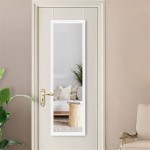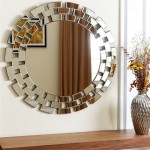How to Screen Mirror PC to Smart TV
Screen mirroring allows users to duplicate their PC display onto a larger screen, such as a Smart TV, enhancing presentations, entertainment, and overall viewing experience. Several methods exist to achieve this, each with its own advantages and requirements. Choosing the right method depends on the user's specific hardware and network setup.
Using Miracast
Miracast is a wireless technology that allows direct screen mirroring between compatible devices. It does not require a network connection and offers relatively low latency. However, not all PCs and Smart TVs support Miracast.
To use Miracast:
- Ensure both the PC and Smart TV are Miracast-enabled.
- On the PC, open the Action Center (Windows key + A).
- Click on "Connect."
- Select the Smart TV from the list of available devices.
- Follow the on-screen prompts to complete the connection.
Using an HDMI Cable
A wired HDMI connection offers the most reliable and highest quality mirroring experience. It minimizes latency and eliminates potential wireless interference. However, it requires a physical cable connection between the PC and the Smart TV, which can be limiting.
To use an HDMI cable:
- Connect one end of the HDMI cable to the HDMI port on the PC.
- Connect the other end of the HDMI cable to the HDMI port on the Smart TV.
- On the Smart TV, select the correct HDMI input source.
- The PC display should automatically mirror to the TV. If not, adjust the display settings on the PC.
Using Chromecast
Chromecast is a streaming device that plugs into the HDMI port of a Smart TV. It allows users to cast content from their Chrome browser or compatible apps. While not true screen mirroring, it provides a convenient way to share specific windows or tabs.
To use Chromecast:
- Ensure the Chromecast and PC are on the same Wi-Fi network.
- Open the Chrome browser on the PC.
- Click the three vertical dots in the top right corner (More).
- Select "Cast."
- Choose the Chromecast device from the list.
- Select whether to cast a specific tab, desktop, or file.
Using DLNA
DLNA (Digital Living Network Alliance) allows sharing media files between devices on a home network. While not screen mirroring in the traditional sense, it enables streaming videos, photos, and music from the PC to the Smart TV. DLNA requires both devices to be DLNA-certified and connected to the same network.
To use DLNA:
- Ensure the PC and Smart TV are connected to the same network and are DLNA-compatible.
- Enable media sharing on the PC. This can typically be done through the Control Panel or Settings app.
- Access the media server from the Smart TV. The method varies depending on the TV's operating system.
- Browse and select the media files to play on the TV.
Using Third-Party Software
Several third-party applications offer screen mirroring functionality. These can provide advanced features, such as improved performance or support for specific devices. However, they often come with a cost or require subscriptions. Researching available options and user reviews is recommended before selecting a third-party solution.
To use third-party software:
- Research and select a reputable third-party screen mirroring application.
- Download and install the application on both the PC and the Smart TV (if required).
- Follow the application's instructions to configure and initiate the mirroring process.
Troubleshooting Common Issues
Several common issues can arise during screen mirroring. Understanding potential problems and their solutions can help users quickly resolve these issues.
Common issues and solutions:
- No Connection: Ensure both devices are connected to the same network (if applicable) and that the chosen method is supported by both. Verify that both devices are properly configured and that any necessary drivers are installed.
- Poor Performance: Try closing unnecessary applications on the PC and ensure a strong network connection. Consider a wired connection (HDMI) for optimal performance. Lowering the resolution or refresh rate can also improve performance.
- Audio Issues: Check the audio output settings on the PC to ensure the correct device is selected. Adjust the volume levels on both the PC and the Smart TV.
- Compatibility Issues: Confirm that both the PC and the Smart TV support the chosen mirroring method. Older devices, in particular, may have limited compatibility. Updating drivers or firmware may resolve some compatibility problems.
By understanding the various methods available and following the provided steps, users can successfully mirror their PC screen to their Smart TV and enjoy an enhanced viewing experience.

How To Screen Mirror Stream Laptop Pc Tv Wireless No Adapters

How To Cast Your Laptop Pc Screen Tv In 2024

Connecting Laptop To The Tv With Just A Few Simple Steps Resource Centre By Reliance Digital

How To Connect Mirror Laptop Screen On Any Smart Tv Wirelessly No App

How To Connect Your Pc A Tv Wirelessly 3 Easy Tricks

Smart Tv Screen Mirror
Lg Tv How Do I Mirror My Pc Screen To Usa Support
Screen Mirroring Pro App Microsoft Apps

Top 4 Screen Mirroring Devices For Meeting Spaces In 2024
How To Cast A Windows Desktop Display Smart Tv








